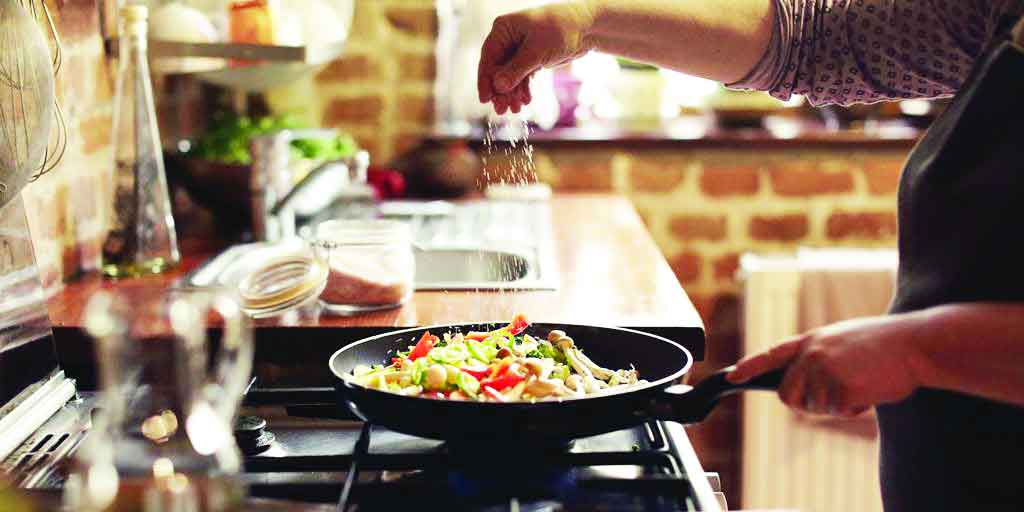Here are a few common kitchen mistakes and the ways to correct them
We all love getting kitchen tips as those little tricks help us become better cooks. But sometimes we need to introspect and stop doing certain things. It’s time we unlearn and learn.
NOT READING THE RECIPE ALL THE WAY THROUGH
Before you start cooking, make sure you have all the ingredients, you think through the timing of the steps and look up for directions that might be confusing. This way, you don’t find yourself staring at the recipe in dismay when the words marinate overnight or chill for at least four hours pop up.
USING TOO SMALL A TOOL
Have you ever tried blending dough in a small bowl or transferring a casserole into a too-tight baking dish or chopping a pound of spinach on a tiny cutting board or using a paring knife to dismantle a squash? Well, bigger is better when it comes to kitchen preparation. It means less mess, less overflow in the oven and, often, more safety.
WORKING WITH A DULL KNIFE
Sharp knives are safer than dull ones that slip and slide. If you don’t have a knife-sharpening tool, “There are lots of stores and services that can help you out,” says Alison Cayne, founder of Haven’s Kitchen cooking school in New York City. “You are not expected to know how to sharpen yourself.” Many kitchen stores, like Williams-Sonoma or Sur la Table, will sharpen knives, and you can look for other places online. You might even be able to get your knives picked up and dropped off.
OVERCOOKING
Remember to account for “carry-over cooking” — the fact that when you take food from the heat, it will continue to cook. Carry-over cooking is often discussed with meat, since meat’s internal temperature will continue to rise even after you pull it from a hot pan. Pork chops can go from just done and juicy to dry and tough. But carry-over cooking also applies to lots of foods, including baked goods and vegetables. Roasted asparagus that comes out of the oven tender can get too soft upon sitting, so pull it out a few minutes before it’s reached the doneness you are looking for.
CUTTING MEAT BEFORE IT HAD A CHANCE TO REST
Allowing meat and poultry to sit for a while after it is removed from the stove, grill or oven not only lets it finish cooking but ensures that the juices stay inside, where they belong. When meat cooks, its protein fibers contract, and if you cut into it right away they won’t have had a chance to relax and reabsorb the juices. This is why you might cut into a steak right off the grill and see it perfectly cooked to a beautiful rare or medium rare, and then a few minutes later it seems to have lost its rosy hue, and all its juices are on the cutting board. Let thick steaks rest 8 to 10 minutes before cutting. Big roasts or whole birds should rest between 20 and 30 minutes before carving. This may seem like a long time, but rest assured the meat will still be warm.
GETTING DISTRACTED
Dana Cowin, editor in chief of Food and Wine Magazine for over 20 years, and author of “Mastering My Mistakes in the Kitchen,” says that after working with numerous chefs and experts, “Here’s what I learned NOT to do: Don’t get distracted. Don’t answer your email, help your kid with homework or catch up on the news. When you’re distracted, that’s when the pine nuts burn, the butter blackens, the caramel hardens, the chicken dries out, the meal gets ruined.”
SEASONING THE DISH ONLY ONCE
Don’t just salt the onions you are sauteing for the sauce and call it a day. Conversely, don’t make the whole sauce recipe and add salt at the end. Add a bit of salt, and adjust other seasonings as you build the dish, tasting as you go, if possible.
FORGETTING TO SALT THE COOKING WATER
Add salt to the water — whether for pasta, vegetables, poaching shrimp or chicken — until it actually tastes salty. Your food won’t absorb all this salt by a long shot, but it will become seasoned and more flavorful. For pasta, grains or some vegetables like potatoes, this really makes a difference, as the starch is absorbing the salted water as it cooks.
SKIMPING ON THE TIME IT TAKES TO FULLY PREHEAT YOUR OVEN
The beep indicating your oven has reached the desired temperature is probably a bit premature, says Dorie Greenspan, author of the cookbook “Everyday Dorie: The Way I Cook.” Says Greenspan: “An oven repair person once told me that when the light on my oven indicated that it had reached temperature, I should wait another 15 minutes before putting in whatever I was baking. The oven needs that time to be truly at temperature, and to be able to hold its temperature when you open the door. This is particularly important with cookies because they bake for such a short time.” She advises keeping a thermometer in your oven.


























